Table of Contents
Managing wastewater is a critical challenge to ensure public health and environmental sustainability. With over 72,000 million litres of sewage generated daily, traditional treatment methods struggle to keep pace, leading to pollution, regulatory fines of ₹50,000-₹5 lakh, and inefficiencies costing ₹1-5 lakh monthly.
AI in sewage treatment transforms these challenges into opportunities, enabling smart sewage treatment that optimizes operations and reduces costs. For municipalities, industries, and facility managers, sewage treatment plant automation powered by AI ensures cleaner water, compliance, and savings of ₹50,000-₹10 lakh annually.
This blog explores how AI improves sewage treatment plant performance, highlights the benefits of using AI for wastewater treatment plants, and provides a roadmap to implement smart sewage treatment technologies using AI and IoT with SKF Elixer’s cutting-edge solutions.
The Growing Need for Intelligent Sewage Treatment in India
India’s urban centers generate vast wastewater as apartments produce 100-150 litres per person daily, and industries discharge 10,000-50,000 litres per facility. Untreated sewage, laden with high TSS (200-500 mg/L) and BOD (200-400 mg/L), risks waterborne illnesses (37 million cases yearly) and environmental damage to rivers.
Traditional sewage treatment plant operations rely on manual adjustments, consuming 500-1,000 kWh per 100 KLD (kilolitres per day) and incurring ₹1-2 lakh monthly energy costs. AI wastewater treatment integrates real-time data and predictive analytics, reducing energy use by 20-30% and ensuring CPCB compliance (TSS <100 mg/L, BOD <30 mg/L). By leveraging smart sewage treatment technologies, facilities save ₹50,000-₹5 lakh yearly while enhancing water quality.
Let’s explore how AI improves sewage treatment plant performance through automation and optimization.
How AI-Powered Solutions Transform Sewage Treatment
AI in sewage treatment revolutionizes operations through advanced technologies:
- Real-Time Water Quality Monitoring: IoT sensors track parameters like pH, TSS, BOD, and dissolved oxygen, feeding data to AI algorithms for instant analysis.
- Optimization of Treatment Processes: Machine learning (ML) adjusts aeration, chemical dosing (e.g., coagulants), and flow rates, reducing energy by 30% (100-150 kWh/day for 100 KLD).
- Predictive Maintenance in Sewage Plants: AI analyzes sensor data to predict equipment failures, preventing downtime costing ₹50,000-₹2 lakh per incident.
- AI-Powered SCADA Systems for Water Plants: Supervisory Control And Data Acquisition (SCADA) systems enable automated control, ensuring consistent effluent quality.
The role of machine learning in sewage treatment automation is pivotal
- Data Analysis: ML models, like Artificial Neural Networks (ANNs), predict COD and BOD removal with 99% accuracy, optimizing processes like MBBR.
- Dynamic Adjustments: ML adjusts aeration in biological treatment, saving 30-50% energy (₹50,000-₹2 lakh yearly for 100 KLD).
- Fault Detection: ML identifies anomalies in pumps or aerators, reducing repair costs by ₹50,000-₹1 lakh per incident.
Benefits of using AI for wastewater treatment plants include:
- Energy Savings
AI optimizes aeration and pumping, reducing energy use by 30-50% (100-150 kWh/day for 100 KLD), saving ₹50,000-₹2 lakh yearly. - Improved Water Quality
Real-time water quality monitoring ensures TSS <100 mg/L and BOD <30 mg/L, meeting CPCB standards and enabling 30-50% water reuse. - Cost Reduction
Predictive maintenance prevents downtime (₹50,000-₹2 lakh per incident), and optimized dosing reduces chemical costs (₹50,000-₹1 lakh yearly). - Regulatory Compliance
AI ensures consistent effluent quality, avoiding fines of ₹50,000-₹5 lakh. - Sustainability
Smart sewage treatment technologies using AI and IoT reduce carbon footprint by 1-2 tonnes per 100 KLD yearly, supporting Swachh Bharat.
These benefits highlight wastewater treatment optimization potential.
Challenges and Solutions
Implementing sewage treatment plant automation faces hurdles:
- High Initial Costs: ₹5-20 lakh for AI and IoT systems strains budgets.
- Solution: Start with smaller 10-50 KLD systems and scale up.
- Technical Expertise: AI requires skilled operators.
- Solution: Train staff for AI-powered SCADA systems.
- Data Security: Cloud-based systems risk cyberattacks.
- Solution: Use on-site desktop AI systems with limited cloud access.
- Integration: Retrofitting older STPs is complex.
- Solution: Partner with vendors like SKF Elixer for modular AI solutions.
Steps to Implement AI-Powered Sewage Treatment
Ready for smart sewage treatment? Follow these steps:
- Assess Needs: Estimate wastewater volume (100-150 litres/person/day, e.g., 100 KLD for 1,000 people).
- Test Water Quality: Analyze TSS/BOD to set AI parameters.
- Choose System: Select an STP or ETP based on need.
- Budget: Plan ₹5-50 lakh setup, ₹50,000-₹5 lakh maintenance.
- Select Vendor: Partner with SKF Elixer for AI-powered SCADA systems for water plants.
- Train Staff: Spend ₹10,000-₹50,000 on AI and IoT training.
Conclusion
AI in sewage treatment transforms sewage treatment plant operations, delivering benefits of using AI for wastewater treatment plants including energy savings, compliance, and sustainability. By leveraging smart sewage treatment technologies using AI and IoT, facilities reduce costs by ₹50,000-₹10 lakh yearly and ensure cleaner water.
SKF Elixer India Pvt. Ltd. offers advanced sewage treatment plant automation solutions, ensuring CPCB-compliant wastewater treatment optimization. Contact SKF Elixer today to revolutionize your STP with AI wastewater treatment solutions.
FAQs
Q1: How does AI improve sewage treatment plant performance?
AI optimizes aeration, dosing, and flow, reducing energy by 30-50% and ensuring CPCB-compliant water (TSS <100 mg/L).
Q2: What are the benefits of using AI for wastewater treatment plants?
Saves ₹50,000-₹10 lakh yearly, improves water quality, ensures compliance, and reduces carbon footprint by 1-2 tonnes/100 KLD.
Q3: What is the role of machine learning in sewage treatment automation?
ML predicts COD/BOD with 99% accuracy, adjusts processes dynamically, and prevents equipment failures, saving ₹50,000-₹2 lakh/incident.
Q4: What are AI-powered SCADA systems for water plants?
Integrate IoT and ML for real-time monitoring and control, optimizing sewage treatment plant operations with ₹5-50 lakh systems.
Q5: What are smart sewage treatment technologies using AI and IoT?
Include real-time sensors, digital twins, and predictive maintenance, reducing energy by 30% and costs by ₹50,000-₹5 lakh yearly.
Good reads are meant to be shared




